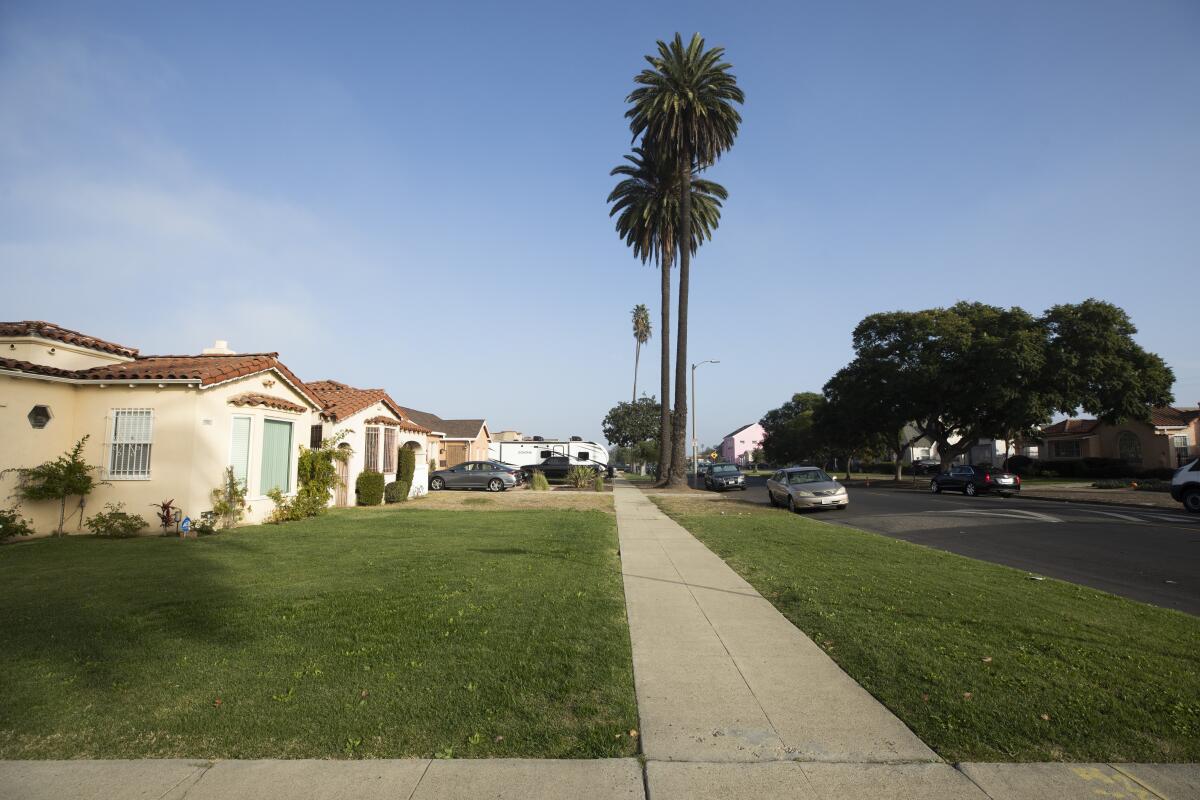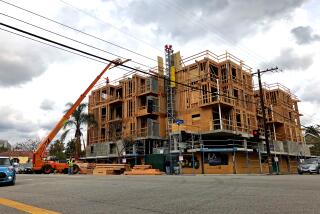Editorial: Turns out Los Angeles voters do want denser housing in single-family neighborhoods

- Share via
The idea of owning a house with a backyard has long been part of the “California dream.” But the California reality for most people is renting an apartment or house they can barely afford.
Affordable housing is scarce, and most residential land in California — and in the United States, in general — is zoned for single-family residences. That’s certainly the case across Los Angeles County, where million-dollar houses abound and the median price of a home is $795,000. That’s more like a California nightmare for people trying to find a reasonably priced home to buy or rent. And the predicament is drastically worse for the roughly 66,000 homeless people in the County of Los Angeles who don’t have anything approximating a home with walls and a door.
In an effort to spur more desperately needed housing, the California Legislature this year finally passed two smart and reasonable bills — Senate Bills 9 and 10 — that will allow a modicum of increased density. Gov. Gavin Newsom signed them into law in September and they take effect on Jan. 1. SB 9 allows up to four units of housing on a single-family lot. SB 10 would allow — but not mandate — a local government to rezone land, including single-family lots, to allow a building of 10 units or less. The property would have to be urban infill or near public transit.
Judging by the backlash from homeowners and city governments trying to put restrictions on the new laws, you would think the laws were mandating high-rises in single-family-zoned communities. They’re not. We’re talking about allowing duplexes, fourplexes and small apartment buildings in residential neighborhoods, which used to be a common practice. And, in the case of SB 9, a property owner must live in one of the units for three years after a lot is split.
Still, the pushback has been fierce from the beginning. The Los Angeles City Council overwhelmingly opposed passage of the bills. Since the bills were passed, some cities have been trying to come up with policies to blunt or block the effects, including mandating parking spots or imposing unrealistic height or size limits. And there is now an effort underway to put a measure on the November 2022 ballot that would not just overturn Senate Bills 9 and 10 but would prohibit the state from ever overriding local zoning regulations again.
But opponents should take another look at what L.A. County voters think about the new zoning measures.
A new poll by the Los Angeles Business Council Institute, done in cooperation with the Los Angeles Times, shows that 55% of voters surveyed support SB 9 while 27% oppose it (14% neither support nor oppose it, and 4% don’t know how they feel). On SB 10, 68% support it and 13% oppose it. And if you’re thinking the poll question oversold SB 9, think again. Here was the question: “SB 9 would offer homeowners new options to build up to four additional units on their lots by adding granny units, or by converting their home to a duplex, triplex, or fourplex, regardless of whether the property is currently zoned as single-family only. Do you support or oppose this new state law?”
It’s outrageous that city governments and community groups are going against the will of the people who want more housing. It’s shameful that there is a move to undermine two laws that will allow a modest increase in housing in neighborhoods that have been reserved for decades for single-family homes.
Los Angeles is not a castle. Homeowners cannot pull up the drawbridge and order the hoi polloi to go somewhere else. The city and the county have to find a way to accommodate moderate growth in housing in all neighborhoods. Yet some homeowners and local elected politicians are caught in this philosophical mind warp between theoretically wanting more housing but practically not allowing it in the beloved stretches zoned only for single-family homes, which is most of the residential land in the county. It’s past time to realize that there is room for more housing that won’t desecrate neighborhoods.
More to Read
A cure for the common opinion
Get thought-provoking perspectives with our weekly newsletter.
You may occasionally receive promotional content from the Los Angeles Times.










